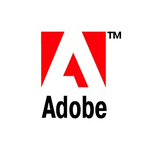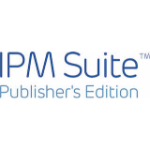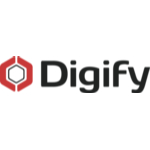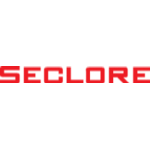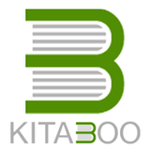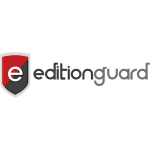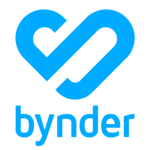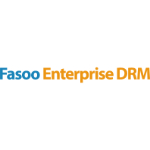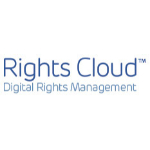TechnologyCounter provides genuine, unbiased real user reviews to help buyers make informed decisions. We may earn a referral fee when you purchase through our links, at no extra cost to you.
List of 15 Best Digital Rights Management Software
Showing 1 - 15 of 18 productsPrimetime DRM is a leading digital rights management solution that helps protect your digital content from unauthorized access and distribution. With its advanced encryption technology, Primetime DRM ensures your valuable assets stay safe and secure...Read Primetime DRM Reviews
IPM Suite Publishing Edition is a software for publishers to streamline their processes and enhance their productivity. With its innovative features and user-friendly interface, IPM Suite enables publishers to efficiently manage all aspects of their...Read IPM Suite Publishing Edition Reviews
Digify is a software that revolutionizes the way you manage, organize, and collaborate on projects. With its intuitive design and seamless features, Digify streamlines your work process and enhances productivity. Say goodbye to complex systems and he...Read Digify Reviews
Caplinked is a powerful, user-friendly platform that streamlines the complicated process of secure file sharing and collaboration. Designed with businesses in mind, Caplinked allows teams to easily and safely share confidential documents with clients...Read Caplinked Reviews
Seclore EDRM is a software that streamlines the entire process of data protection and management. It is designed to handle sensitive information and intellectual property from creation to sharing, both within and outside the organization. With its ad...Read Seclore EDRM Reviews
Bitmovin is a software solution utilized by top organizations and businesses for video encoding, player, and analytics needs. Trusted by media giants such as Netflix and Disney, Bitmovin offers a highly reliable is a solution for delivering high-qual...Read Bitmovin Reviews
KITABOO, the all-in-one digital publishing platform designed to revolutionize the way you create, distribute and consume content. With user-friendly features technology, KITABOO allows you to seamlessly publish and deliver your content to readers on...Read KITABOO Reviews
EditionGuard, the newest innovation in digital publishing and content protection. With our user-friendly platform, authors and publishers can confidently distribute their digital content without the fear of it getting pirated or shared without permis...Read EditionGuard Reviews
Pallycon is a digital content security software that is changing the game for content creators and distributors alike. With state-of-the-art technology features, Pallycon offers top-notch protection for your valuable digital assets. Empower your busi...Read Pallycon Reviews
MemberSpace is a membership website software designed to simplify and streamline the process of creating and managing a membership business. With its user-friendly features and customizable options, MemberSpace empowers individuals and businesses to...Read MemberSpace Reviews
Bynder, the leader in innovative content management and digital asset solutions, is revolutionizing the way businesses streamline their creative process. With its user-friendly interface features, Bynder is empowering companies to easily store, organ...Read Bynder Reviews
CopySafe is a software designed to protect and secure digital content in various formats such as images, videos, and documents. With its advanced encryption and copy protection technology, CopySafe ensures that your intellectual property is safeguard...Read CopySafe Reviews
Fasoo Enterprise DRM is a software designed to protect digital assets and sensitive data within an organization. Its advanced features ensure secure file sharing, access control, and document encryption, providing peace of mind for businesses of all...Read Fasoo Enterprise DRM Reviews
FADEL Rights Cloud is the all-in-one solution for rights management. With advanced features design, it simplifies the complex process of tracking and managing rights for digital assets, ensuring your intellectual property is protected and secure. Imp...Read FADEL Rights Cloud Reviews
Bitmovin is a software solution utilized by top organizations and businesses for video encoding, player, and analytics needs. Trusted by media giants such as Netflix and Disney, Bitmovin offers a highly reliable is a solution for delivering high-qual...Read Bitmovin Reviews
- What Is Digital Rights Management Software?
- Top Reasons Why Businesses Need Digital Rights Management Software?
- What Are the Top Key Features of Digital Rights Management Software?
- What Are the Top Benefits of Digital Rights Management Software?
- What Are the Steps to Choose the Right Digital Rights Management Software?
- What Are the Types of Digital Rights Management Software for Different Industries?
- What Are the Technology Trends for Best Digital Rights Management Software?
- What Are the Deployment Options for Digital Rights Management Software?
What Is Digital Rights Management Software?
Digital rights management software refers to a specific kind of software that governs the manner and timing of accessing and utilizing digital content. Digital rights management system is employed to regulate and govern access and utilization of digital material, services, or gadgets, including domains such as movies, music, and games, with the primary objective of thwarting illicit entry and usage.
This measure aids in safeguarding intellectual property rights by ensuring that the utilization of content adheres strictly to predetermined regulations or contractual arrangements.
Furthermore, it aids in safeguarding against the detrimental effects of piracy, which has the ability to inflict harm onto the sector. Digital rights management DRM software employs many strategies, including encryption, watermarking, and access control mechanisms, in order to deter illicit utilization.
For instance, a digital file may necessitate the use of a password for access, or it may impose restrictions on the frequency of file access. Digital rights management software serves the purpose of safeguarding digital content and services by imposing restrictions on the manner and timing of their utilization.
The practice of lawfully purchasing digital content promotes the consumption of such content while simultaneously discouraging the unauthorized downloading or sharing of this content with others. The digital rights management platform enables content providers, including software businesses, musicians, and filmmakers, to safeguard their creative works and ensure equitable remuneration for their endeavors.
Top Reasons Why Businesses Need Digital Rights Management Software?
1. The application of digital rights to documents, media, ebooks, and other kinds of digital content facilitates the safeguarding of intellectual property.
2. Permits enterprises to establish digital usage limitations, such as prohibiting the replication, alteration, or downloading of content, in order to safeguard their intellectual property against unauthorized distribution.
3. The digital rights management tools enables the automated monitoring and administration of use and authorization privileges for digital goods and services.
4. Facilitates the implementation of automatic royalty payment systems for digital content consumers, hence enhancing businesses' ability to optimize the financial value of their material.
5. The provision of extensive visibility and accountability for digital assets is aimed at assisting corporations in effectively enforcing their copyrights.
6. The system facilitates convenient management of content accessibility, enabling enterprises to market their digital products and services at self-determined prices.
7. The digital rights management platform provides support for many business models, allowing enterprises to generate revenue from their products and services across diverse marketplaces.
8. Digital rights management software facilitates the dissemination of digital content to users in various formats, hence aiding in its distribution across many platforms.
9. The automation of use rights acquisition aids in the streamlining of the content distribution process.
10. The implementation of the digital rights management tools enhances the level of security, enabling enterprises to safeguard their content from any unwanted access or exploitation.
11. Mitigates unauthorized duplication by implementing digital barriers to safeguard digital assets against persistent peer-to-peer distribution.
12. Enhances the user experience by granting users unrestricted access to complete content.
13. One benefit of digital rights management DRM software is its ability to enhance both internal and external collaboration. Users can safely communicate digitally-protected content, minimizing the danger of compromising its protection.
14. The implementation of digital rights management platform enables firms to enhance corporate compliance and data privacy standards.
15. The implementation of enhanced security measures for digital information in cloud environments serves to mitigate the risk of data breaches and subsequent legal actions, hence reducing financial liabilities.
What Are the Top Key Features of Digital Rights Management Software?
Top Key Features of digital rights management software include:
1. Access Control: This mechanism guarantees the provision of authorized access to digital material and services. Authentication and encryption mechanisms are employed to safeguard digital content against unauthorized access.
2. Usage Rights Specification: This feature enables content proprietors to delineate the permissible usage of their digital content by customers. This encompasses various attributes, such as the permissible quantity of duplications, the compatibility with specific devices, the duration of content accessibility, and the permissibility of content transfer.
3. Network Security: The digital rights software the ability of content owners to exercise control over the manner and location of accessing and distributing digital content. This encompasses characteristics such as the implementation of access control mechanisms to regulate user, device, or network access, as well as the utilization of protective measures like firewall systems and antivirus software.
4. Licensing Model: This enables content proprietors to exercise authority over the sales, distribution, and administration of digital content. These capabilities encompass subscription and pay-per-view models, as well as usage tracking and reporting tools.
5. Watermarking: The utilization of digital rights software embedding within media files or images enables content owners to ascertain the origin of the content and safeguard it against unlawful utilization.
6. Media Optimization: Digital rights management tools enable content creators to enhance digital material for particular forms of media. This includes functionalities such as the optimization of frame rate and bitrate for video files, as well as the shrinking of image files.
What Are the Top Benefits of Digital Rights Management Software?
1. Improved Content Security: DRM software is designed to offer strong encryption and content security functionalities, which effectively safeguard copyrighted content against any kind of unlawful access or utilization.
2. Improved Control of Digital Assets: DRM systems facilitate the exercise of control by content owners over the access and utilization of their assets, as well as the specific actions that can be performed on these assets.
3. Increased Revenues from Content Sales: Digital rights management DRM software facilitates the secure online sale of digital assets by content owners, contingent upon the specific rights granted to users. This practice guarantees remuneration for creators' output and safeguards their rights pertaining to intellectual property.
4. Increased Flexibility in Pricing Structures: Digital rights management software enables content owners to provide a range of price and licensing options, hence enhancing flexibility in their offerings. This will assist individuals in optimizing the monetization of their material.
5. Protections Against Piracy: DRM systems enable content proprietors to safeguard their digital resources from copyright violation and unauthorized distribution.
6. Enhanced Compliance: DRM software facilitates content owners in adhering to many legal requirements and regulations, while simultaneously safeguarding their digital assets.
7. Support for Mobile Devices: The best digital rights management software enables content proprietors to safeguard and distribute their digital resources across a diverse array of portable electronic devices, such as smartphones, tablets, and wearable gadgets.
What Are the Steps to Choose the Right Digital Rights Management Software?
1. Assess digital rights management software requirements: The task at hand involves ascertaining the dimensions of the digital assets that necessitate safeguarding, encompassing the specific file types and requisite level of protection.
2. Evaluate DRM software features: One should contemplate the necessity of digital rights management tools possessing either rudimentary or advanced functionalities, such as encryption, watermarking, and access controls.
3. Examine the compatibility of DRM software: It is imperative to ensure that the selected DRM software is in alignment with the current file formats and systems in place, as well as any third-party services that may be utilized.
4. Consider scalability and pricing: Conduct a cost analysis of the DRM systems in order to ascertain the requisite expenditure for the desired functionality. Seek out options that have strong scalability to accommodate future expansion.
5. Research customer reviews and support: It is advisable to consult internet reviews in order to gain insights into user sentiment towards the product. Additionally, it is recommended to thoroughly investigate the available customer care choices prior to finalizing one's decision.
6. Test and choose the right solution: If feasible, conduct a digital rights software evaluation to ascertain its compatibility with your requirements. Once you have determined that the product or service aligns well with your needs and requirements, proceed with the purchase and proceed with the deployment process.
What Are the Types of Digital Rights Management Software for Different Industries?
Digital rights management software is employed for the purpose of safeguarding the copyright and entitlements associated with digital content, including but not limited to software, media files, and patents.
Digital rights management DRM software is widely employed across several businesses as a means to safeguard their content against illegal utilization, piracy, and fraudulent practices.
A wide range of DRM systems have been developed to meet the unique requirements of various industries. There are various instances of digital rights DRM software available across diverse industries, which can be exemplified as follows:
• Media Industry: Digital rights management systems are specifically developed for media entities such as streaming services, television networks, movie studios, and game publishers. Frequently, these solutions offer automated rights management, copy protection, secure streaming, rights collecting, and additional functionalities aimed at safeguarding content against piracy.
• Software Industry: Digital rights management systems are utilized in various software applications, including PC games, educational applications, internet services, cloud solutions, and enterprise software. Frequently, the digital rights management platform provide functionalities such as licensing management, digital signature and validation, and other aspects aimed at safeguarding software from unauthorized usage.
• Pharmaceutical Industry: Pharmaceutical businesses employ the best digital rights management software as a safeguard against the illicit replication and unauthorized dissemination of their products. These systems frequently provide features like as anti-tampering, product authentication, secure vending, tracking, auditing, and other functionalities to guarantee the protection of their products' exclusive rights.
• Automotive Industry: The automotive industry use digital rights software as a means of safeguarding their intellectual property against unauthorized replication of designs and theft of vehicle leathers.
Digital rights management tools frequently offer budgetary safeguards, asset verification, licensing administration, and additional functionalities aimed at safeguarding car designs against illicit utilization.
What Are the Technology Trends for Best Digital Rights Management Software?
The best digital rights management software is a technological solution employed to safeguard digital content, including music, movies, and software, by monitoring and regulating the manner, location, and timing of content access in order to prevent unauthorized usage.
The primary objective of a digital rights management system is to facilitate content providers' comprehension and regulation of the individuals who possess access to their content and the manner in which they engage with it. The increasing expansion of the worldwide media ecosystem necessitates the development of digital rights management tools that are efficient, secure, and compliant.
The prevailing technological advancements in the domain of digital rights management encompass the following trends:
1. Cloud-Based Solutions: The utilization of cloud computing is having a transformative impact on the application of digital rights management systems. The utilization of cloud storage and access for Digital rights management DRM software is experiencing a growing trend in popularity. The utilization of cloud storage for secure data storage and efficient access management surpasses conventional approaches in safeguarding and administering content.
2. Metadata and Machine Learning: Advanced methods for content management and monitoring, such as the utilization of metadata tags and machine learning techniques, are increasingly being adopted. Metadata tags provide a means for achieving finer levels of control over digital content, whereas machine learning algorithms possess the capability to autonomously identify and highlight instances of illicit content usage.
3. Increased Emphasis on Cybersecurity: The growing complexity of digital rights management has led to a heightened focus on ensuring the security and confidentiality of digital content. The use of authentication, encryption, and various security measures is vital in safeguarding material and guaranteeing adherence to regulatory requirements.
4. Digital Rights Cryptocurrency: Cryptocurrencies are currently being employed as a means to establish a novel framework for digital rights management, known as Digital Rights Tokens. These tokens possess the capability to store, acquire, and monitor entitlements associated with digital material.
The adoption of digital rights software is rapidly increasing due to its ability to enhance the rights holders' control over the utilization and monetization of their material.
What Are the Deployment Options for Digital Rights Management Software?
Digital rights management software has the capability to be implemented in various ways, including on-site, cloud-based, or through the utilization of third-party services.
The process of on-site deployment entails the acquisition and installation of the software, followed by its hosting on a server located within the organization's premises. This grants the organization an enhanced level of authority over the system, albeit necessitating the organization to undertake the responsibility of system maintenance and management.
Cloud-based deployment refers to a hosting arrangement wherein a third-party service provider assumes responsibility for the installation and administration of the digital rights management software. This solution presents itself as an appealing choice for firms who lack the necessary resources to internally maintain the system.
Ultimately, companies have the option to engage the assistance of a third-party provider specializing in digital rights management in order to effectively oversee their systems. This alternative deployment option provides enterprises with the opportunity to concentrate on their fundamental areas of expertise, while entrusting the installation and administration of the digital rights management software to a third-party entity.
